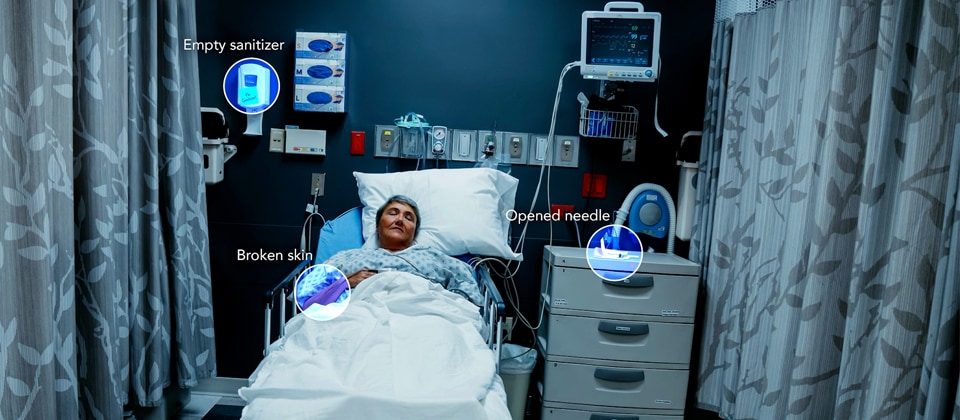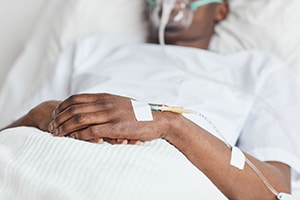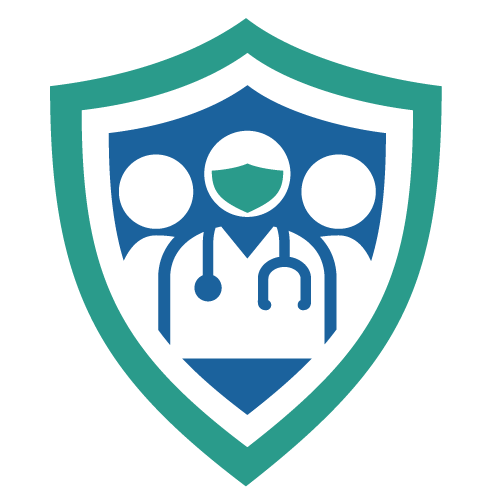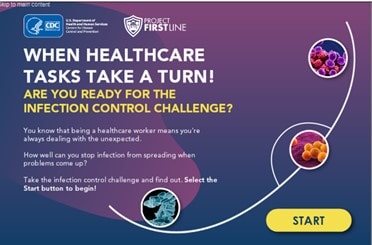Recognize Infection Risks in Health Care

Risk recognition is seeing the potential for a problem to happen.
Risk is a part of life. When you approach a broken stoplight at a busy intersection or see a small child reaching toward a hot stove, almost automatically you slow down your car or reach for the child to prevent something bad from happening. This is our brain recognizing risk and taking action.
You can use this same process of recognizing risk when it comes to infection control in health care. If you learn to spot the opportunities for germs to spread, then you can step in to stop them and prevent infections.
The risk for germs to spread in health care is different than in other places. There’s a higher chance for germs to spread in healthcare settings, than, for example, a grocery store, because that is where patients who are sick come for care. Healthcare workers and patients usually have closer interactions during care than people do in community settings. Additionally, patients who are already ill or weak are more likely to be vulnerable to infection. And it’s not just patients who are at risk—some germs can break through the body’s natural defenses, even in a person who is healthy, like a healthcare worker. This is why recognizing infection risks in health care is so important.
Reservoir: A place where germs live.
Learning to recognize infection risks in health care means learning to identify moments throughout your workday when there is an opportunity for germs to spread and make people sick.
To recognize these opportunities, we need to know:
- where germs live (their reservoirs)
- how they can get from place to place or to people to cause an infection (through pathways)
On or in the body
- Skin
- Gut
- Respiratory tract
- Blood
Environment
- Wet Surfaces
- Dry Surfaces
- Dirt and Dust
- Devices
- Through touch
- By being breathed in
- Through splashes and sprays
- Water
- Body fluid
- By bypassing/breaking down the body’s natural defenses
- For example, through procedures or surgeries

There is more to the spread of infections than reservoirs and pathways.
Germs also need a person to infect. That person can be a patient, or you or one of your coworkers.
But infection isn’t inevitable. For infection to occur, the germs need to get around the body’s normal defenses. For example, if a person is already sick, their immune system could be weak and not be able to fight germs easily. If their skin, which is normally a strong barrier, is broken because they have an IV inserted, germs can enter their body through that break in the skin.
And finally, the germs need to survive throughout this journey. Infection control actions at any of these points help keep germs from spreading and causing infection.
Recognizing infection risks throughout your workday can help you protect your patients and yourself, no matter the situation.
Recognize the Risks. Take Action. Protect Your Patients.
As you’re going about your workday, there are certain things that you are likely already doing to reduce the risk of spreading germs, like cleaning your hands between tasks or cleaning and disinfecting shared medical devices. Standard Precautions are the things you’re doing, every day, for every patient, to keep germs from spreading. Because risks will always exist in healthcare settings, we follow these Standard Precautions to protect patients and ourselves — regardless of whether you know a patient has a specific infection – because often you don’t know.
Recognizing infection risks goes beyond Standard Precautions. Because no two days in health care are ever the same, there will be moments when healthcare workers might need to apply infection control recommendations to situations that aren’t usually described in guidelines. That’s why understanding how germs spread and make people sick is so helpful – it allows you to recognize infection risks throughout your workday, no matter the moment.
- What reservoirs are involved?
- What pathways might move the germs in and out of each reservoir?
- Is it possible that the task I’m about to do will cause germs to spread from a reservoir?
- What other actions can I take to help stop the spread of germs and prevent infections, and protect patients, myself, and my coworkers?

